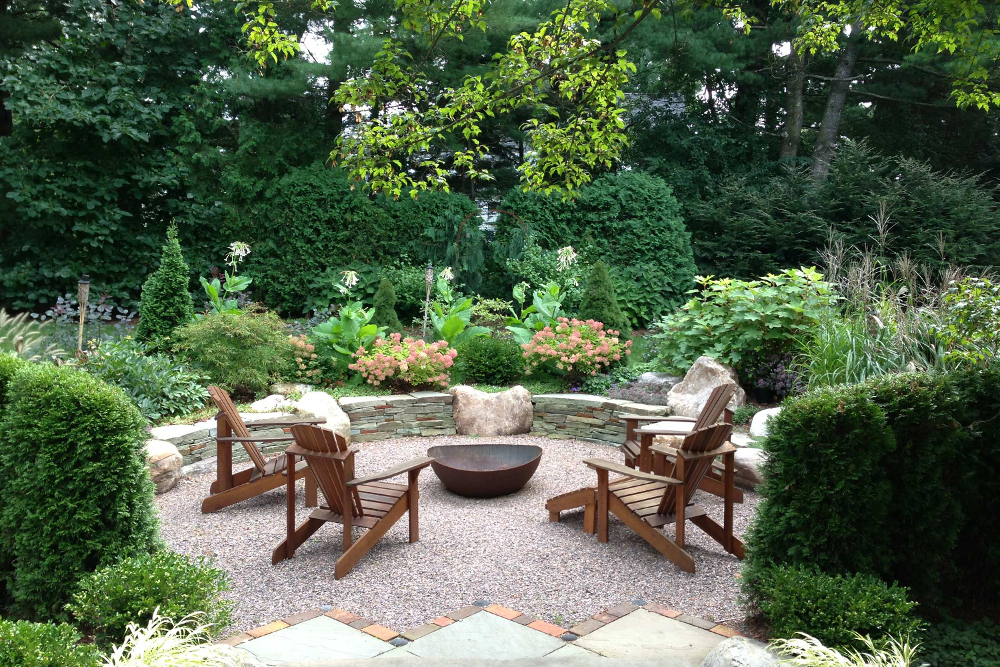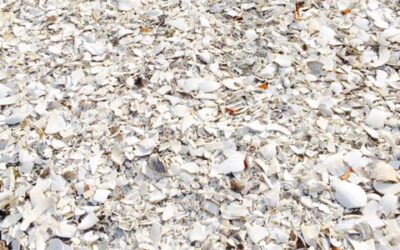 When it comes to creating the perfect fire pit area, choosing the right gravel can make all the difference. Not only does it enhance the aesthetics of your outdoor space, but it also plays a crucial role in safety and functionality. In this comprehensive guide, we will explore different types of gravel that are suitable for fire pit areas and provide you with helpful tips on installation and maintenance.
When it comes to creating the perfect fire pit area, choosing the right gravel can make all the difference. Not only does it enhance the aesthetics of your outdoor space, but it also plays a crucial role in safety and functionality. In this comprehensive guide, we will explore different types of gravel that are suitable for fire pit areas and provide you with helpful tips on installation and maintenance.
Benefits of Gravel for Fire Pit Areas
Gravel offers numerous benefits when it comes to designing your fire pit area. Let’s take a closer look at some of these advantages:
1. Drainage and Stability
One of the key advantages of using gravel is its excellent drainage capabilities. Unlike other materials like concrete or pavers, gravel allows water to pass through easily, preventing the formation of puddles or muddy areas around your fire pit. This is particularly important during rainy seasons or when snow melts, as it ensures that your fire pit area remains dry and usable.
Additionally, gravel provides stability underfoot, making it a safe surface for walking. Unlike rounded rocks or sand, gravel locks together tightly, offering a solid and secure footing for you and your guests.
2. Versatility and Aesthetics
Gravel comes in a variety of colors, sizes, and textures, allowing you to choose the perfect option that complements your overall outdoor design. Whether you prefer a rustic, traditional, or contemporary style, there is a gravel type that will suit your taste. Its versatility makes it easy to blend with different landscaping elements, such as plants, furniture, and hardscape features.
Moreover, gravel adds a charming and inviting touch to your fire pit area. The soft crunch underfoot creates a pleasant sensory experience, enhancing the ambiance of your outdoor space.
3. Cost-Effectiveness and Easy Maintenance
Compared to other materials like concrete or pavers, gravel is a cost-effective choice for your fire pit area. Bags of gravel are relatively inexpensive, making it a budget-friendly option for homeowners. Additionally, the installation process is typically straightforward, which can save you time and money compared to more complex materials.
In terms of maintenance, gravel is relatively low-maintenance. Regularly sweeping or raking away fallen leaves and debris is usually sufficient to keep your fire pit area clean. If you notice any gaps or loss of gravel over time, simply add more gravel to fill in the spaces and restore the appearance of your fire pit area.
Choosing the Right Gravel for Your Fire Pit Area
Now that you understand the benefits of using gravel for your fire pit area, let’s explore the different types of gravel that are suitable for this purpose:
1. Crushed Limestone
Crushed limestone is a popular choice for gravel fire pit areas due to its excellent drainage properties. This type of gravel compacts well, providing a solid base for seating and heavy items. It is often used as the primary material for the fire pit patio itself, creating a sturdy and functional surface.
However, it’s important to note that crushed limestone should not be used inside the fire pit itself, as it can be an explosion hazard. We recommend using a different type of stone for the interior of the fire pit to ensure safety.
2. Pea Gravel
Pea gravel is another great option for fire pit areas. It is known for its aesthetics and comfortable walking surface, making it a popular choice for outdoor spaces. Pea gravel is available in various colors and sizes, allowing you to customize the look of your fire pit area.
While pea gravel doesn’t compact as tightly as crushed limestone, it can still be used effectively around the fire pit area. Regular raking is necessary to keep the surface smooth and even, as the gravel may shift over time. Some homeowners even choose to combine crushed limestone as the base layer and pea gravel as the top layer for a visually appealing and functional fire pit area.
3. Sharps
Sharps, also known as broken rock, is a gravel option that offers exceptional stability. Unlike rounded gravel, which can be unstable underfoot, sharps provide a solid and secure surface for walking. This is particularly important for fire pit areas, as it reduces the risk of slips and falls, especially in low-light conditions.
When choosing sharps for your fire pit area, opt for sizes between 1/4″ to 3/8″. This size range provides the optimal balance between stability and comfort. While walking barefoot on sharps may not be ideal, it offers the necessary stability and functionality for your fire pit seating area.
Installation Steps for Gravel Fire Pit Areas
Installing gravel for your fire pit area is a relatively simple process. Here are the steps to follow:
- Prepare the area: Clear the site where you want to create your fire pit area. Remove any existing grass, rocks, or debris to create a clean and level surface.
- Lay down landscape fabric: Before laying the gravel, it’s important to lay down landscape fabric to prevent weed growth. Cut the fabric to fit the area and secure it in place using landscape pins or staples.
- Spread the gravel: Start spreading the gravel evenly across the area, starting from one corner and working your way to the opposite side. Aim for a thickness of at least 2-3 inches to ensure proper coverage.
- Level the surface: Use a rake or shovel to distribute the gravel evenly and create a smooth, level surface. Pay attention to any uneven areas and make adjustments as needed.
- Add edging (optional): If desired, you can install edging materials around the fire pit area to create a defined border and help contain the gravel. This step is particularly useful if you want to prevent the gravel from spreading onto surrounding areas.
- Maintenance: Regularly sweep or rake the gravel to remove fallen leaves, debris, or any displaced gravel. If you notice any gaps or loss of gravel, add more to fill in the spaces and maintain a consistent surface.
By following these steps, you can create a beautiful and functional fire pit area using gravel.
Safety Considerations and Permits
While gravel fire pit areas are generally safe and do not require specific permits, it’s essential to prioritize safety in your design and usage. Here are some important considerations:
- Fire pit placement: Ensure that your fire pit is positioned at a safe distance from any flammable materials, such as plants, trees, or structures. Follow local regulations and guidelines regarding fire pit placement to prevent accidents and ensure compliance.
- Fire pit containment: Consider using a fire pit ring or other forms of containment to prevent the spreading of fire or embers. This is particularly important if you have a wood-burning fire pit.
- Fire safety practices: Always practice proper fire safety measures when using your fire pit. Keep a fire extinguisher nearby, never leave the fire unattended, and supervise children and pets in the area.
- Local regulations: Check with your local municipality to understand any specific regulations or permits required for fire pits or outdoor fire features. Regulations may vary depending on your location, so it’s important to stay informed and comply with any necessary requirements.
Choosing the right gravel for your fire pit area is crucial for creating a beautiful, functional, and safe outdoor space. Whether you opt for crushed limestone, pea gravel, or sharps, each option offers unique benefits that can enhance your fire pit experience. Remember to follow proper installation techniques and prioritize safety in your design and usage. With the right gravel and careful planning, you can create a stunning fire pit area that becomes the centerpiece of your outdoor gatherings for years to come.
Request a Quote (859-635-5680) And We Will Contact You Shortly!
Calculate How Much Material You Need For Your Project

—
About Bray Topsoil & Gravel
Topsoil and gravel delivered to you by Bray Trucking, a specialized aggregate hauler servicing the Kentucky, Ohio, and Indiana region.
>>Learn More
.




